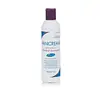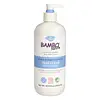What's inside
What's inside
 Benefits
Benefits

 Concerns
Concerns

No concerns
 Ingredients Side-by-side
Ingredients Side-by-side

Zinc Pyrithione 2%
AntiseborrhoeicWater
Skin ConditioningLauryl Glucoside
CleansingCoco-Glucoside
CleansingAcrylates Copolymer
Panthenol
Skin ConditioningPentylene Glycol
Skin ConditioningGlycerin
HumectantSucrose Cocoate
EmulsifyingDisodium Cocoyl Glutamate
CleansingSodium Cocoyl Glycinate
CleansingBehenyl Alcohol
EmollientSucrose Stearate
EmollientCetyl Palmitate
EmollientSodium Cocoyl Glutamate
Cleansing1,2-Hexanediol
Skin ConditioningSodium Hydroxide
BufferingCaprylyl Glycol
EmollientSodium Chloride
MaskingZinc Pyrithione 2%, Water, Lauryl Glucoside, Coco-Glucoside, Acrylates Copolymer, Panthenol, Pentylene Glycol, Glycerin, Sucrose Cocoate, Disodium Cocoyl Glutamate, Sodium Cocoyl Glycinate, Behenyl Alcohol, Sucrose Stearate, Cetyl Palmitate, Sodium Cocoyl Glutamate, 1,2-Hexanediol, Sodium Hydroxide, Caprylyl Glycol, Sodium Chloride
 Reviews
Reviews

Ingredients Explained
These ingredients are found in both products.
Ingredients higher up in an ingredient list are typically present in a larger amount.
Coco-Glucoside is a surfactant, or a cleansing ingredient. It is made from glucose and coconut oil.
Surfactants help gather dirt, oil, and other pollutants from your skin to be rinsed away.
This ingredient is considered gentle and non-comedogenic. However, it may still be irritating for some.
Learn more about Coco-GlucosideGlycerin is already naturally found in your skin. It helps moisturize and protect your skin.
A study from 2016 found glycerin to be more effective as a humectant than AHAs and hyaluronic acid.
As a humectant, it helps the skin stay hydrated by pulling moisture to your skin. The low molecular weight of glycerin allows it to pull moisture into the deeper layers of your skin.
Hydrated skin improves your skin barrier; Your skin barrier helps protect against irritants and bacteria.
Glycerin has also been found to have antimicrobial and antiviral properties. Due to these properties, glycerin is often used in wound and burn treatments.
In cosmetics, glycerin is usually derived from plants such as soybean or palm. However, it can also be sourced from animals, such as tallow or animal fat.
This ingredient is organic, colorless, odorless, and non-toxic.
Glycerin is the name for this ingredient in American English. British English uses Glycerol/Glycerine.
Learn more about GlycerinLauryl Glucoside sugar- and lipid-based cleansing agent. It is created from glucose and lauryl alcohol.
This ingredient is a surfactant, making it easier to rinse oil, dirt, and other pollutants away.
A British study found lauryl glucoside to cause skin sensitivity for some people. We recommend speaking with a professional if you have concerns.
Other names for this ingredient include "Lauryl Polyglucose", "Lauryl glycoside", and "D-Glucopyranoside".
Learn more about Lauryl GlucosideWater. It's the most common cosmetic ingredient of all. You'll usually see it at the top of ingredient lists, meaning that it makes up the largest part of the product.
So why is it so popular? Water most often acts as a solvent - this means that it helps dissolve other ingredients into the formulation.
You'll also recognize water as that liquid we all need to stay alive. If you see this, drink a glass of water. Stay hydrated!
Learn more about Water